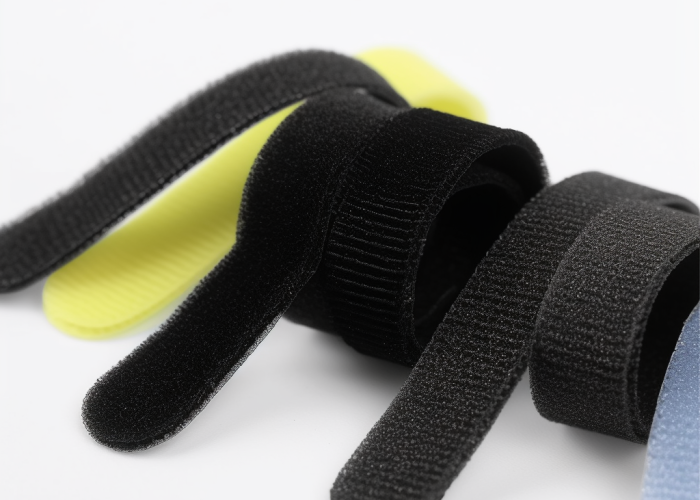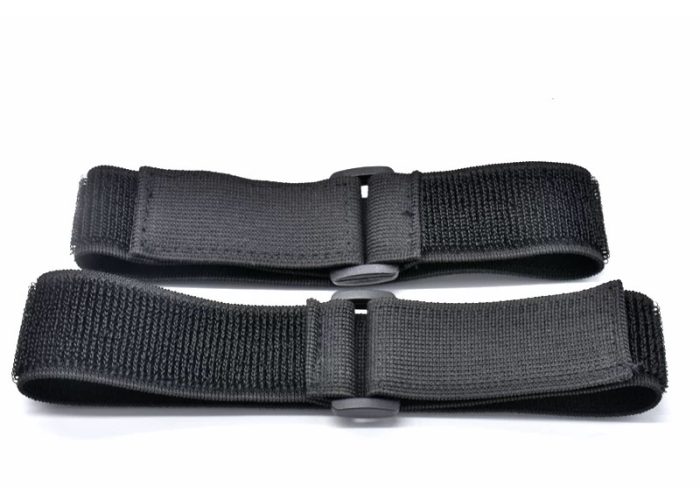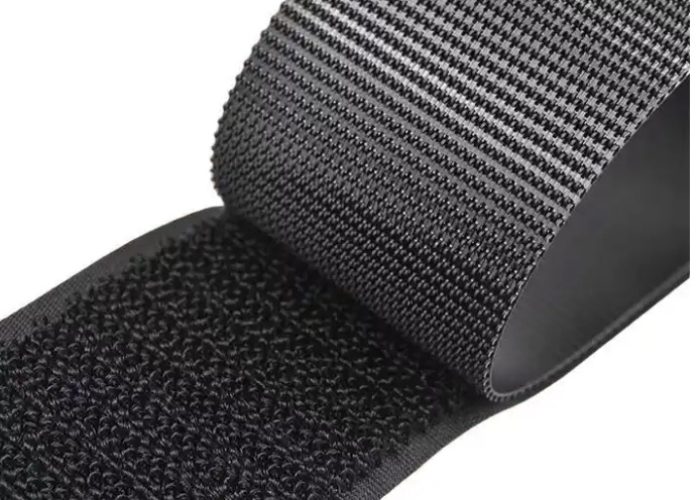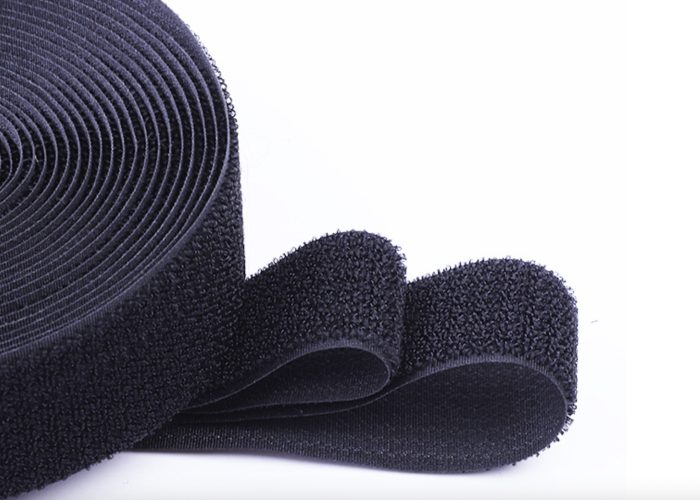As specialized webbing manufacturers, we produce custom hook and loop solutions for product developers across industries. Our expertise enables precise control over pile height, density, and engagement properties to meet your specific engineering requirements.
Low pile straps have shorter loops measuring 0.06-0.08 inches, while high pile straps feature taller loops measuring 0.12-0.20 inches. This height difference creates distinct performance characteristics – low pile offers better cycle life for frequent use applications, while high pile provides superior holding strength for heavy-duty requirements.
Compare loop and hook pile types, explore performance differences, and get expert guidance to select the best fit for strength, durability, and function.


Webbing manufacturing expert with 15+ years of experience helping product developers build high-performance straps for industrial, medical, and outdoor use.
Hook sides feature stiff, mushroom-shaped projections while loop sides contain soft, fibrous surfaces that vary between low pile (0.06-0.08 inches) and high pile (0.12-0.20 inches) heights. This structural difference creates the mechanical fastening system where hooks catch and engage with loops when pressed together, forming connections that can be separated and reattached as needed.
Key structural differences at a glance:
The hook side’s design maximizes engagement efficiency. These stiff, plastic hooks extend from the base material in engineered shapes that optimize gripping capability. Hook density significantly impacts performance, with denser arrangements providing greater holding power at the cost of flexibility.
Loop sides provide the receiving surface for hook engagement. Their fibrous construction creates multiple connection points for hooks to penetrate and catch onto. This engagement forms a secure fastening mechanism that maintains connection until deliberately separated. Our manufacturing processes allow precise control of loop height to balance holding strength and reusability for your specific requirements.
Our customization capabilities include adjusting material composition, hook density, loop height, and backing material to deliver specialized fastening solutions across diverse applications. This enables product developers to select the optimal combination for their specific performance requirements.

Low pile straps feature shorter loops measuring between 0.06-0.08 inches (1.5-2.0 mm) in height, with a thin, flexible profile and soft texture. These straps excel in applications requiring frequent attachment and detachment cycles while offering less holding strength than high pile alternatives, making them ideal for medical devices, apparel, and other uses where a low-profile fastening solution is needed.
Key characteristics at a glance:
Low pile loops create a uniform, dense surface of short fibers that feels smoother to the touch compared to high pile variants. This construction allows better conformability around curved or irregular surfaces, making low pile straps ideal for applications where the fastener needs to follow contours without adding bulk.
The superior cycle life of low pile straps is their most significant advantage. Testing shows they withstand substantially more attach-detach cycles before degradation compared to high pile options. The shorter loops resist crushing and matting over time, maintaining fastening effectiveness through repeated use in applications like adjustable straps or components requiring regular maintenance access.
High pile straps feature taller loops measuring between 0.12-0.20 inches (3.0-5.0 mm) in height, with a thicker, more robust construction that provides superior holding strength. These straps excel in applications requiring maximum grip power but offer fewer reuse cycles, making them ideal for industrial, automotive, and other heavy-duty applications where secure fastening is critical.
Key characteristics at a glance:
High pile construction incorporates longer fibers that create a deeper engagement zone for hooks. When pressed together, these loops form a complex three-dimensional matrix that allows hooks to penetrate deeply and establish stronger mechanical connections. This structural advantage translates directly into superior holding power for demanding applications.
The primary application advantage of high pile straps is their exceptional holding strength under load. The deeper engagement zone creates more contact points between hooks and loops, distributing forces effectively and reducing separation under stress. This makes them the optimal choice for applications where fastener failure could result in safety concerns or operational disruptions.

Optimal hook and loop pairing is determined by analyzing strength requirements, cycle life needs, profile compatibility, and environmental conditions for the specific application. Different combinations yield varying performance characteristics, with trade-offs between holding power and reusability that must be carefully balanced to achieve the best performance for your product’s unique requirements.
Key determining factors at a glance:
The strength vs. cycle life balance represents a critical decision point when selecting hook and loop combinations. Stronger hook designs with mushroom-shaped or “aggressive” profiles provide superior holding power but typically reduce useful life cycles by 30-40%. This trade-off must be evaluated based on whether the application prioritizes secure attachment or frequent reuse.
Profile matching between hook and loop components significantly impacts system performance. Thinner, more flexible hooks pair effectively with low pile loops for frequent access applications, while thicker, more rigid hooks engage more securely with high pile loops for maximum holding strength. Mismatched combinations result in either insufficient holding strength or premature component wear.
Common hook and loop combinations are tailored for specific applications, with hook types B2 and B3 pairing with low pile loops for medical and apparel uses, while hook types #15 and extended versions pair with high pile for industrial applications. These engineered combinations optimize critical factors such as holding strength, cycle life, and environmental resistance to meet the performance demands of each industry.
Key application-specific combinations at a glance:
Low pile combinations are ideal for applications requiring frequent adjustment and user comfort. The B2/low pile pairing withstands 5,000+ attachment cycles without significant degradation, making it perfect for frequently adjusted medical devices, braces, and clothing fasteners. The low profile and soft edges reduce irritation while maintaining sufficient holding strength for lightweight applications.
Industrial applications demand high pile combinations for maximum security. The #15 D-shaped hook/high pile pairing delivers exceptional tensile strength for securing heavy components or withstanding vibration. This combination’s robust design makes it ideal for manufacturing environments, vehicle mounting systems, and other applications where reliable fastening under stress is critical.

Hook and loop systems can be customized through variations in width, shape, density, profile, and backing materials to optimize performance for specific functions. These variables can be precisely controlled to create fastening solutions tailored to exact requirements, whether for medical, industrial, automotive, or consumer applications.
Key customization variables at a glance:
Width customization directly impacts holding strength, with wider fastening areas providing proportionally greater holding power. Hook and loop systems can be produced in precise widths from narrow strips for lightweight applications to substantial widths for maximum load-bearing capacity. This flexibility allows engineers to incorporate exactly the right fastening strength for specific product requirements.
Profile variations enable specialized applications across diverse industries. Thin, low-profile options minimize bulk in medical and apparel applications where comfort is critical. Thicker, industrial-strength profiles provide robust holding power for structural components and heavy equipment mounting. These precise profile specifications can be tailored to exact application needs.
Material selection plays a crucial role in environmental adaptability. Specialized hook and loop systems designed for extreme temperatures, moisture exposure, UV resistance, chemical compatibility, and cleanroom applications ensure reliable performance across diverse operating conditions, from outdoor installations to sterile medical environments.
Understanding the differences between low and high pile straps is essential for selecting the optimal fastening solution for your product. From medical devices requiring frequent adjustments to heavy-duty industrial applications, the right pile height significantly impacts performance. As a specialized webbing manufacturer, we can engineer custom hook and loop systems with precise specifications to meet your exact product requirements.
Higher hook densities provide greater holding strength but decrease flexibility, while lower densities offer improved conformability at the cost of reduced holding power. The optimal density depends on your application – industrial uses typically benefit from densities above 300 hooks per square inch, while medical applications often use 200-250 hooks per square inch for better comfort.
Hook types with more aggressive shapes and higher densities perform best for picking up carpet lint. These hooks feature sharp, defined edges that can effectively catch and hold fibers, making them ideal for applications where removing debris from textile surfaces is the primary function.
Yes, specialized hooks with micro-tooth designs and specific density patterns are engineered specifically for pet hair removal. These hooks feature a unique combination of engagement angles and spacing that effectively captures and retains animal hair without becoming clogged, making them ideal for grooming tools and pet-focused cleaning products.
The ideal heavy-duty combination pairs #15 D-shaped hooks with high pile loops (0.12-0.20 inches) on industrial-strength backing. This configuration maximizes tensile strength up to 10,000 cycles while providing secure fastening under vibration, temperature fluctuations, and significant loads where failure is not an option.
Hook shape directly influences engagement strength, cycle life, and noise during separation. Mushroom-shaped hooks provide the strongest hold but with reduced reusability, J-shaped hooks offer balanced performance, while flat-topped designs maximize cycle life at the expense of holding power. Each design serves specific application requirements.
Material compatibility between hook and loop components is crucial for optimal performance and longevity. Nylon-based systems provide excellent general-purpose functionality but may absorb moisture, while polyester alternatives offer better environmental resistance. Selecting compatible materials ensures consistent performance under specific operating conditions and prevents premature failure.